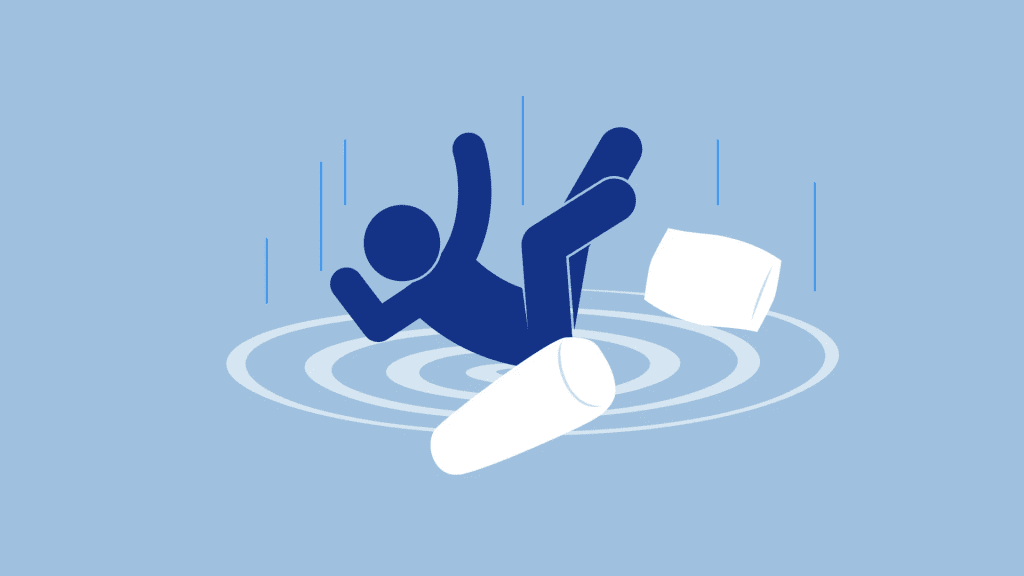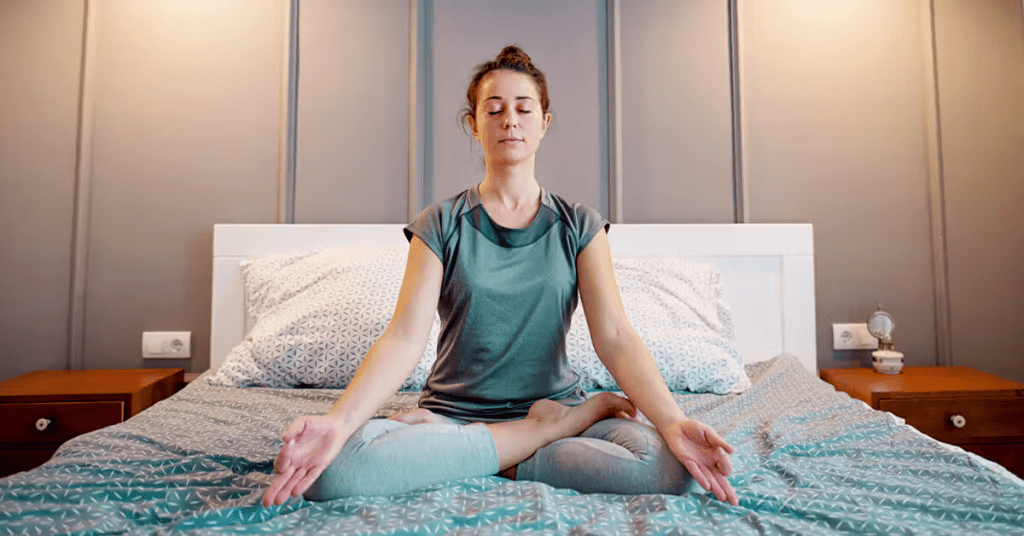Have you ever been on the verge of falling asleep, only to be jolted awake by a sudden jerk that makes you feel like you’re falling? It’s an unsettling experience that can leave you confused and wide awake, even if you’re physically drained and in desperate need of rest. If this scenario sounds familiar, you’re not alone—up to 70% of people experience these sudden twitches, known as hypnic jerks.
What Are Hypnic Jerks?

Hypnic jerks, also called sleep starts or myoclonic jerks, are involuntary muscle twitches that typically occur as you’re drifting off to sleep. They often feel as though you’re falling, and your body responds with a sudden, instinctive jolt that may wake you up completely.
The experience of a hypnic jerk can be startling, and it never seems to lose its abrupt nature, no matter how many times it happens. It’s a momentary sensation that disrupts your journey into sleep, often leaving you wondering what just happened. While the sensation can be alarming, rest assured, hypnic jerks are a normal phenomenon.
The Science Behind Hypnic Jerks
While researchers have yet to fully understand the exact causes of hypnic jerks, there are a couple of leading theories. Each theory offers a different explanation of why these sudden body movements happen right as you’re about to fall asleep.
1. The Nervous System Theory
One prevalent theory suggests that hypnic jerks occur because your nervous system is gradually “downshifting” as your body transitions into sleep. As your body prepares to rest, several physiological changes take place: your muscle tone relaxes, your heart rate slows, your breathing deepens, and your body temperature drops. This theory proposes that hypnic jerks are a side effect of these changes, a sort of muscle misfire as your nervous system adapts to the altered state.
2. The Muscle Relaxation Theory
Another theory holds that hypnic jerks occur because of the sudden relaxation of muscles as you fall asleep. Your brain, in its relaxed state, can sometimes interpret this sensation as falling, which triggers a defensive response—a jerk that tightens your muscles to protect yourself from an imaginary fall. This reaction might be an evolutionary remnant from a time when our ancestors slept in trees, where falling asleep could potentially lead to a literal fall.
External Triggers: What Contributes to Hypnic Jerks?
While hypnic jerks are a natural occurrence, external factors can increase their frequency or intensity. The following are some common triggers:
- Caffeine: Consuming caffeine late in the day can overstimulate your nervous system, making hypnic jerks more likely as you try to wind down.
- Sleep Deprivation: A lack of sufficient sleep can heighten the likelihood of hypnic jerks, as your body may struggle to transition smoothly into rest.
- Stress and Anxiety: High levels of stress or anxiety can make it difficult for your body to relax, leading to an increased chance of experiencing these sudden twitches.
- Stimulant Medications: Medications like Adderall or Ritalin, which stimulate the nervous system, can also contribute to the occurrence of hypnic jerks.
- Physical Exertion: Exercising late in the day can leave your muscles tense and overactive, making it harder for your body to shift into sleep mode.
Are Hypnic Jerks Dangerous?

For most people, hypnic jerks are completely harmless. They are a natural phenomenon and not considered a medical disorder. In fact, hypnic jerks can be seen as your body’s signal to transition into sleep. Dr. Rustgi, a sleep expert, reassures us that “hypnic jerks are not a disorder; they are a natural part of the body’s sleep-wake cycle.”
However, while they are benign, hypnic jerks can disrupt your sleep and lead to frustration, especially if they happen frequently. If you’re someone who experiences these jerks nightly, it may leave you feeling anxious about falling asleep, perpetuating a cycle of sleep disturbance.
How to Reduce Hypnic Jerks: Simple Lifestyle Adjustments
While hypnic jerks don’t require treatment, there are several lifestyle modifications you can make to reduce their frequency or intensity. These small adjustments may help you experience smoother transitions into sleep and fewer disruptions from these sudden twitches.
1. Limit Caffeine Intake
Avoid consuming caffeine, especially in the afternoon and evening hours. Caffeine is a stimulant that can interfere with your body’s ability to relax, making hypnic jerks more likely to occur. Opt for caffeine-free herbal teas or water in the hours leading up to bedtime.
2. Create a Relaxing Pre-Sleep Routine
Instead of engaging in high-energy activities in the evening, spend time unwinding. Do calming activities, such as reading, meditation, or deep-breathing exercises. This will help your body ease into sleep mode without sudden jerks.

3. Practice Breathing Techniques
Before bed, try practicing slow, deep breathing exercises. This not only calms the nervous system but also prepares your body for rest, helping to prevent sudden muscle twitches as you fall asleep.
4. Maintain a Consistent Sleep Schedule
Developing good sleep hygiene is key. Go to bed and wake up at the same time each day, even on weekends. A consistent sleep schedule helps regulate your circadian rhythm, which can reduce the likelihood of experiencing hypnic jerks.
5. Reduce Stress
Managing stress throughout the day can have a significant impact on your sleep quality. Incorporate stress-relieving techniques like yoga, meditation, or journaling into your daily routine to calm your mind and body before bed.
The Connection Between Hypnic Jerks and Sleep Disorders

In rare cases, frequent or severe hypnic jerks may be associated with underlying sleep disorders, such as restless legs syndrome or periodic limb movement disorder. If you’re experiencing frequent disturbances that interfere with your sleep and lead to daytime fatigue, it’s advisable to consult a healthcare professional to rule out any serious conditions.
Conclusion: Embrace the Natural Occurrence of Hypnic Jerks
Although hypnic jerks can be startling and disruptive, they are generally harmless and natural. These involuntary twitches serve as a reminder of the complex transition your body undergoes as it shifts from wakefulness to sleep. By making small adjustments to your routine—such as avoiding caffeine, practicing relaxation techniques, and reducing stress—you can minimize the occurrence of hypnic jerks and enjoy a more restful night’s sleep.
Remember, while hypnic jerks may never fully disappear, they are a normal part of the human sleep experience. Embrace them as a quirky reminder of your body’s intricate functions, and rest assured that they are not something to fear.


